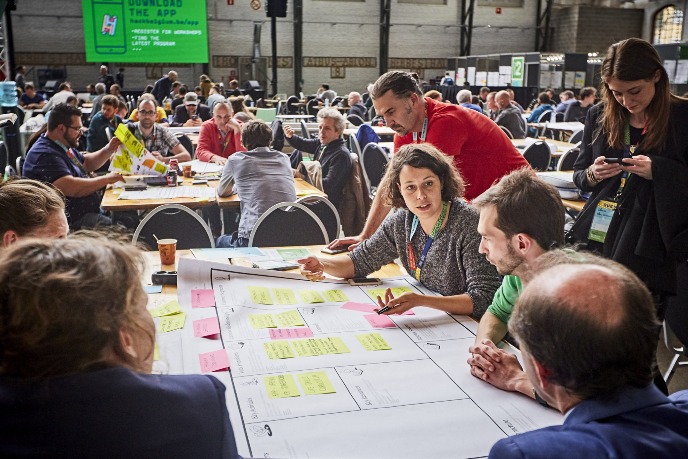Virtual Hackathons
How can we build a sustainable city or campus? How can we make a healthy diet more attractive for young adults? These are some examples of complex issues in our society today that require a solution. An inclusive and innovative method of finding an answer is a hackathon.
Hackathons were originally only used within the ICT world. The technique also lends itself well to solving social challenges, such as the energy transition, healthy eating, or biodiversity. During the challenge, teams creatively search for an innovative solution to a proposed problem in a short period of time.
Virtual Hackathons in education!
Virtual hackathons is a 2-year EU-Erasmus+ project (from 2021 to 2023) that aims
to promote the use of virtual hackathons as an innovative educational tool in Higher Education. The University of Groningen is one of the partners, represented by Science LinX, ISEC (institute for science education and communication) and PIE (professionalization and innovation of education). The consortium consists of 8 partners from five countries (Spain, Cyprus, Greece, Germany and the Netherlands) and is coordinated by the Technical University of Valencia.
The consortium is developing:
- Training materials for organizing a (virtual) hackathon
- A digital platform that allows participants to work on technological and sociological challenges in regional, national and international settings.
Glow-in-the-Dark Zernike Challenge
How might we reduce light pollution on Zernike Campus?
That is the central question of the challenge we will tackle in a multidisciplinary team of students, researchers and involved stakeholders in the weekend of 7-9 October 2022.
The Netherlands remains one of the most light-polluted countries in the world. This is one of the downsides of our 24-hour economy.
Artificial lighting is also a problem on our campus. When you take a walk on Zernike Campus at night, you can see your surroundings clearly, almost as if you’re walking in daylight. The light you see comes from the hundreds of lamps that are left on at night that, together, consume a lot of energy.
Light pollution on our campus does not only cause higher energy consumption. The strong artificial lighting also influences research results of researchers such as astronomers and biologists. The stars and the moon are less visible from the telescope on top of the Bernoulliborg and the lighting at night disturbs the biorhythm of the animals in the university’s animal facilities. However, at night you cannot turn off the light completely; it makes you feel safe when you walk on campus in the dark.


| Last modified: | 03 March 2023 3.40 p.m. |

